| |
WHO sounds alarm on viral hepatitis infections claiming 3500 lives each day
|
| |
| |
9 April 2024
News release
Geneva
WHO 2024 Global Hepatitis Report
According to the World Health Organization (WHO) 2024 Global Hepatitis Report, the number of lives lost due to viral hepatitis is increasing. The disease is the second leading infectious cause of death globally -- with 1.3 million deaths per year, the same as tuberculosis, a top infectious killer.
The report said that there are 3,500 deaths per day worldwide from hepatitis infections -- 83 percent from hepatitis B, 17 percent from hepatitis C.
The report, released at the World Hepatitis Summit, highlights that despite better tools for diagnosis and treatment, and decreasing product prices, testing and treatment coverage rates have stalled. But, reaching the WHO elimination goal by 2030 should still be achievable, if swift actions are taken now.
New data from 187 countries show that the estimated number of deaths from viral hepatitis increased from 1.1 million in 2019 to 1.3 million in 2022. Of these, 83% were caused by hepatitis B, and 17% by hepatitis C. Every day, there are 3500 people dying globally due to hepatitis B and C infections.
"This report paints a troubling picture: despite progress globally in preventing hepatitis infections, deaths are rising because far too few people with hepatitis are being diagnosed and treated," said WHO Director-General Dr Tedros Adhanom Ghebreyesus. "WHO is committed to supporting countries to use all the tools at their disposal - at access prices - to save lives and turn this trend around."
Global progress and gaps in diagnosis and treatment
Across all regions, only 13% of people living with chronic hepatitis B infection had been diagnosed and approximately 3% (7 million) had received antiviral therapy at the end of 2022. Regarding hepatitis C, 36% had been diagnosed and 20% (12.5 million) had received curative treatment.
These results fall well below the global targets to treat 80% of people living with chronic hepatitis B and hepatitis C by 2030. However, they do indicate slight but consistent improvement in diagnosis and treatment coverage since the last reported estimates in 2019. Specifically, hepatitis B diagnosis increased from 10% to 13% and treatment from 2% to 3%, and hepatitis C diagnosis from 21% to 36% and treatment from 13% to 20%.
The burden of viral hepatitis varies regionally. The WHO African Region bears 63% of new hepatitis B infections, yet despite this burden, only 18% of newborns in the region receive the hepatitis B birth-dose vaccination. In the Western Pacific Region, which accounts for 47% of hepatitis B deaths, treatment coverage stands at 23% among people diagnosed, which is far too low to reduce mortality.
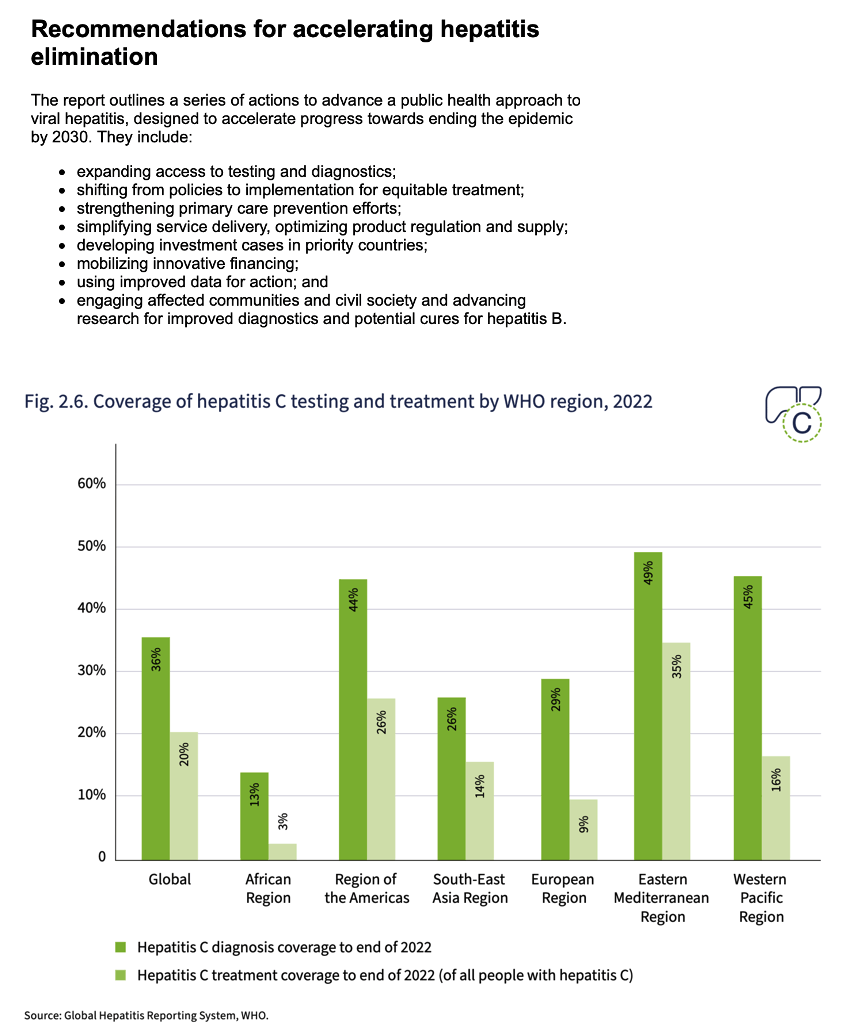
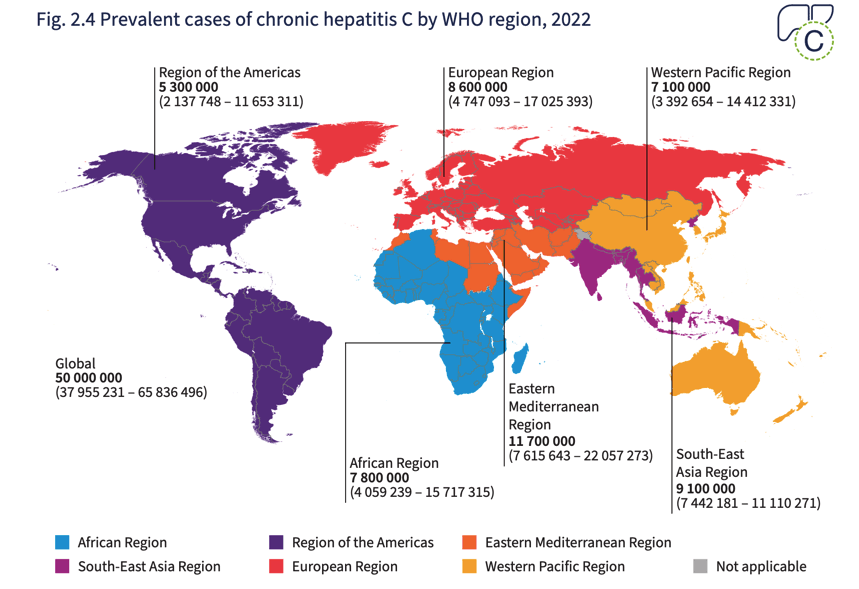
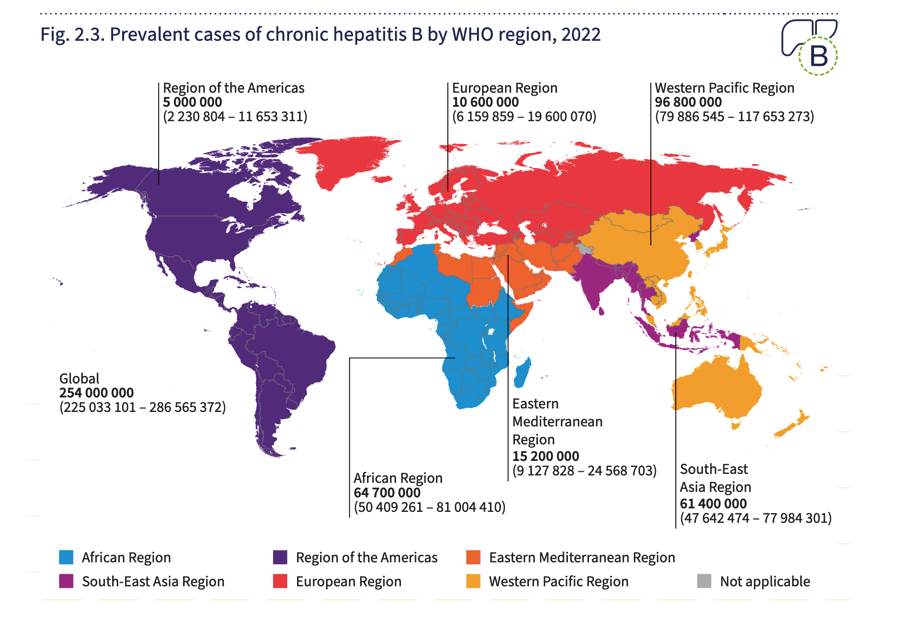
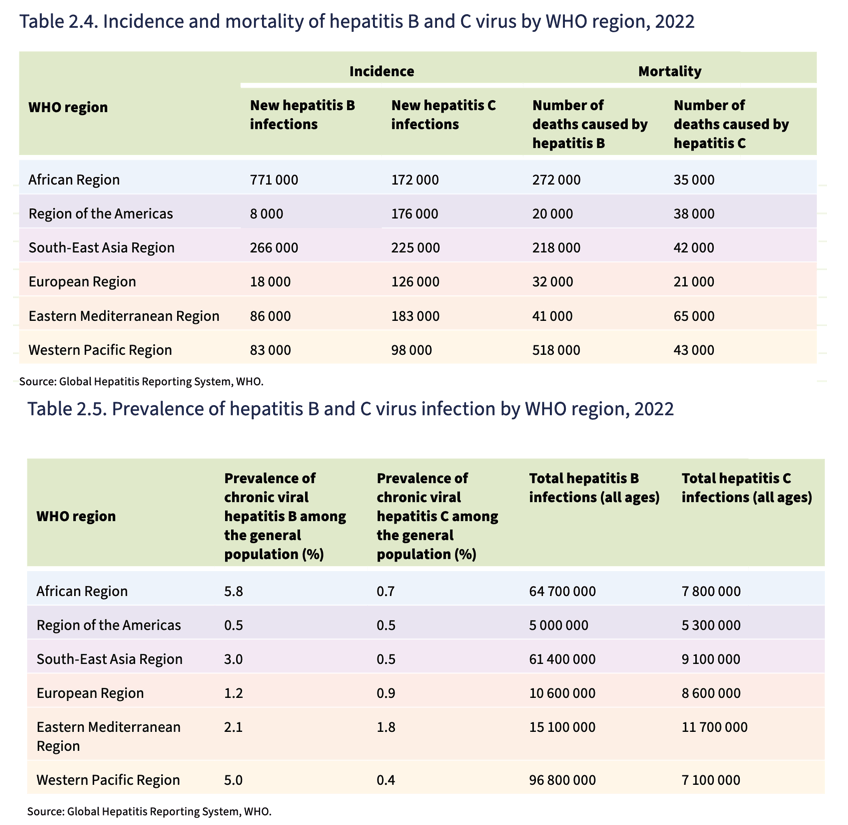
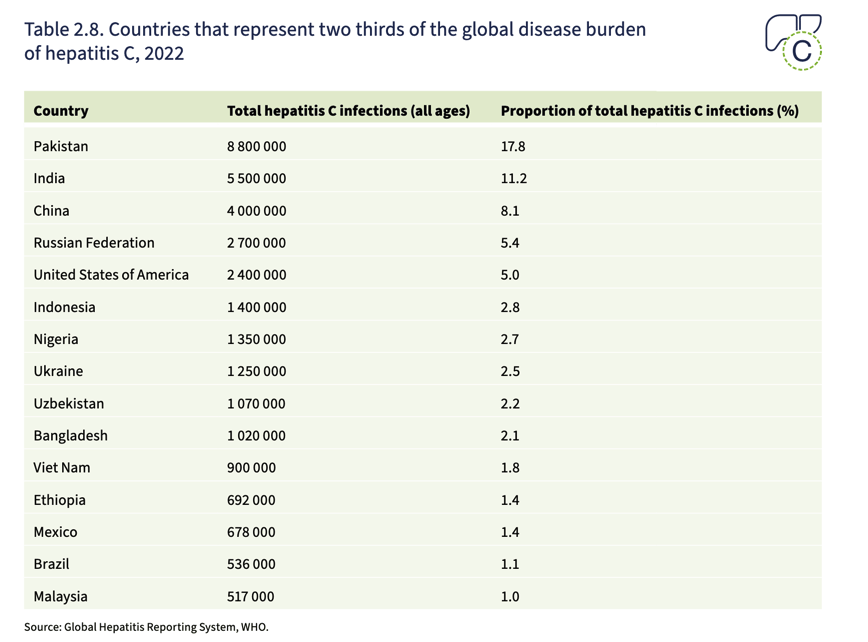
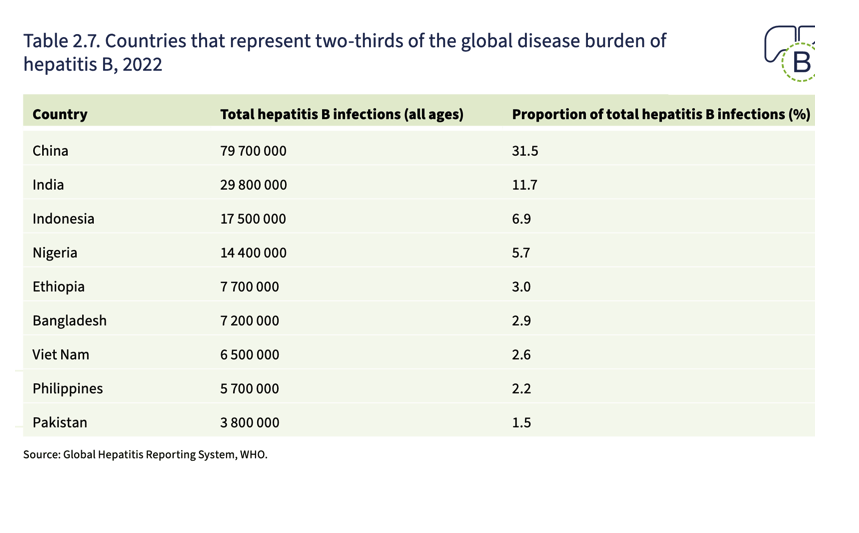
|
|
| |
| |
|
|
|